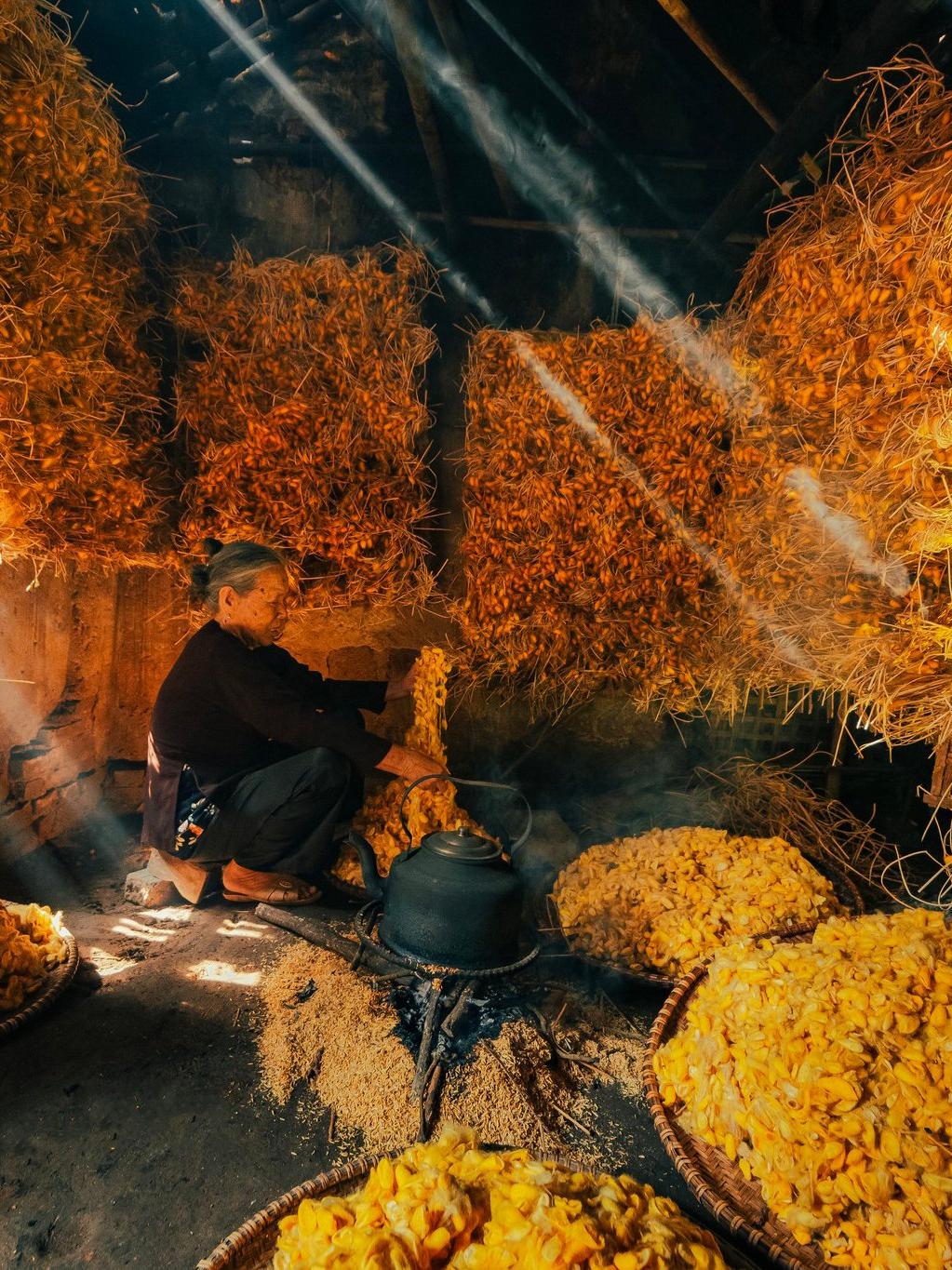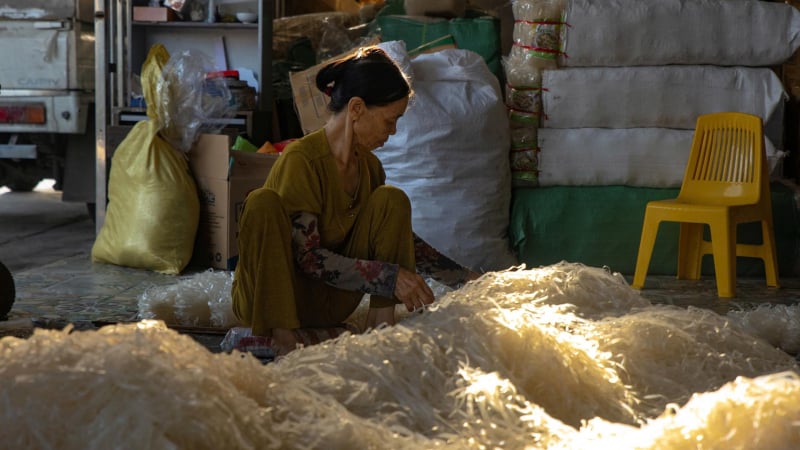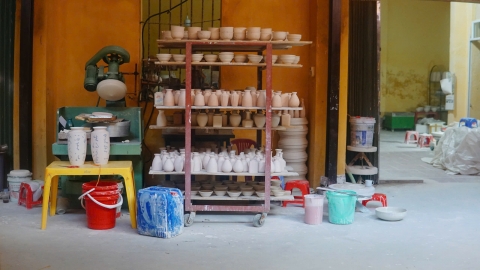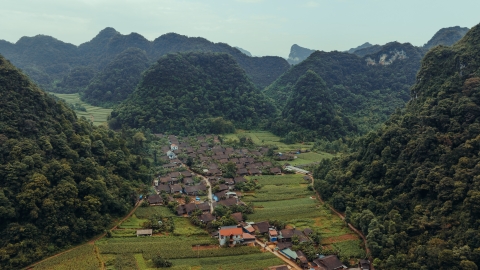Memories of a once-famous craft village
Lying along the Red River, Vu Thu District, Thai Binh Province, now Vu Thu Commune, Hung Yen Province, used to be a bustling village with a bustling silk reeling and cocooning profession throughout the region. Before the 1990s, this was the key silkworm breeding and silk reeling area of Thai Binh, with hundreds of households working in the profession, and products were exported to many northern provinces.
The silk weaving profession in Vu Thu has existed for hundreds of years, passed down from generation to generation. No one remembers exactly when the craft village started, but it is known that during the period of rural renovation after 1986, this profession helped many households escape poverty and become prosperous thanks to silk. Thai Binh silk was also famous in the market at that time, but the silk weaving and cocoon weaving profession could not keep up with the times.

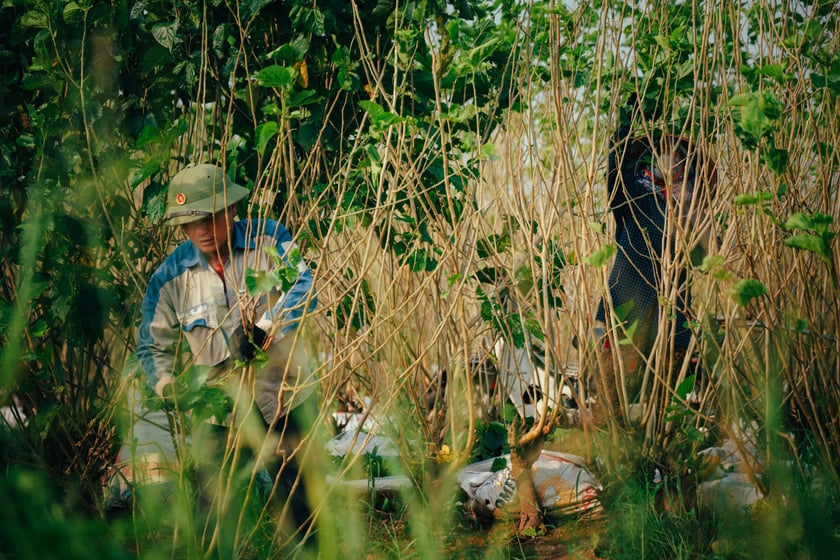
Mulberry fields, silkworms, and silk threads have bound the people here from generation to generation, becoming a cultural beauty of the countryside.
Related articles
Since the 2000s, when Chinese silk products flooded in at cheap prices, combined with the strong development of the industrial textile industry, the Vu Thu silk weaving profession fell into decline. People gradually left the cocoons and incubators, turning to farming or finding work in industrial zones. Now there are only a few households keeping the profession.
In the last days of July, when the sun was still harsh on the Northern Delta, photographer Nguyen Trong Cung visited Vu Thu commune. Among the red-tiled houses and winding alleys, the clattering sound of silkworm trays and the sweet scent of fresh mulberries were still preserved in the few remaining houses.
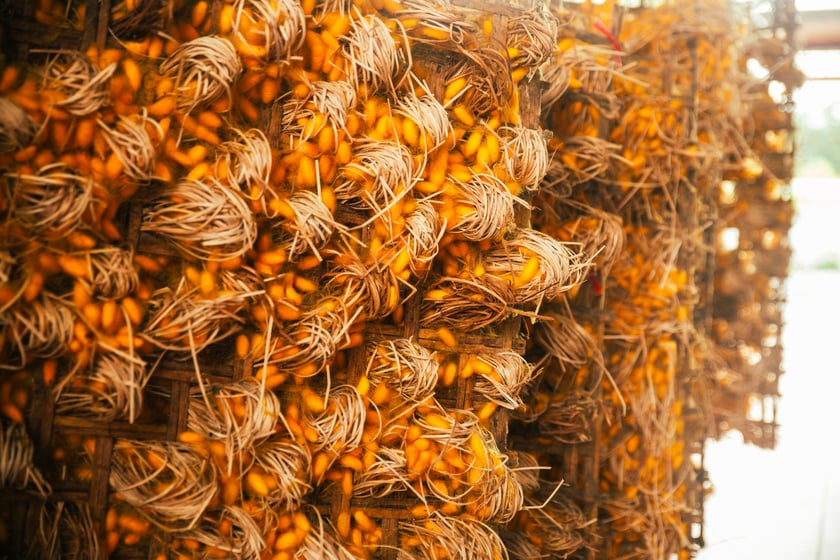
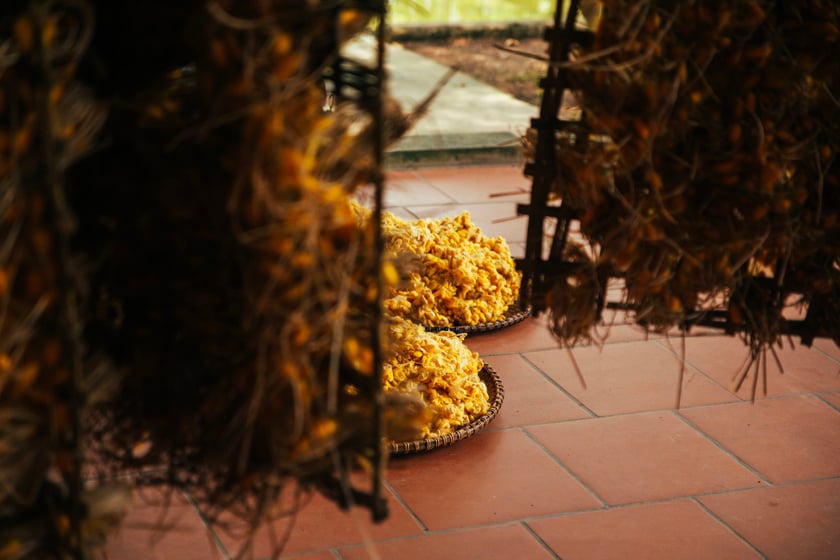
Over time, many families have "cleared the baskets and put away the nests", the silkworm breeding profession has gradually faded away, with only a few people still attached to the profession.
The last cocoons
No longer was the scene of the whole village buzzing with the sound of silkworms eating mulberry leaves. When he arrived, Mr. Cung only saw empty yards, a few lonely cocoon trays drying, and dusty silk reeling frames in the corner of the house.
With no more silk left, the silkworm breeding industry now mainly sells cocoons to other places at a price of 250,000 - 300,000 VND/kg. The steps such as cooking cocoons, whittling threads, and spinning silk have all been simplified. No one weaves silk on site anymore. The machines are also old and run at a low level, enough to maintain a long-term relationship with the profession but no longer profitable as before.
However, each scene still appeared vividly under the faint rays of sunlight shining through the wooden window. Through the weak light, the small house appeared dimly as if immersed in old memories. The golden, shimmering silkworm cocoons, covering the bamboo trays, surrounded the old worker like a circle of memories.
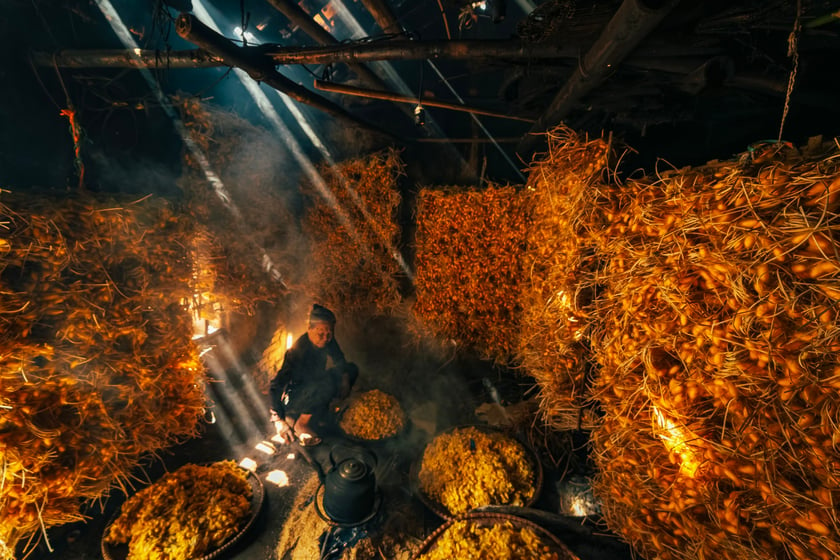
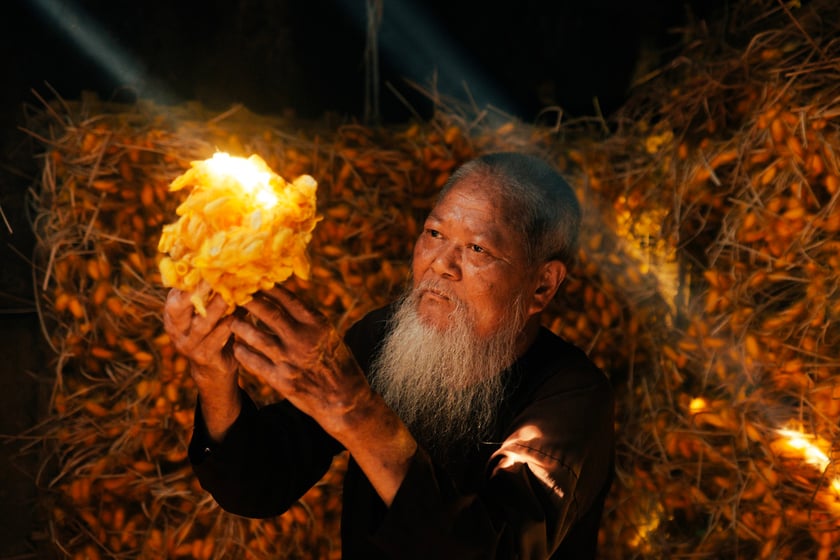
In Vu Thu, only the elderly with gray hair, dim eyes and calloused hands remain.
Under the old roof, where light only penetrated through a small crack in the door, golden silkworm cocoons were stacked in layers, like bright patches of color in the dark space. The musty smell of silk, of long-dried bamboo, of the worker's sweat mixed together, creating a familiar smell of the profession. The woman sat next to the cocoon, her hair streaked with silver, her eyes beginning to cloud but still shining with a ray of light like the ray of light through the window frame, illuminating the memories of a time of attachment.

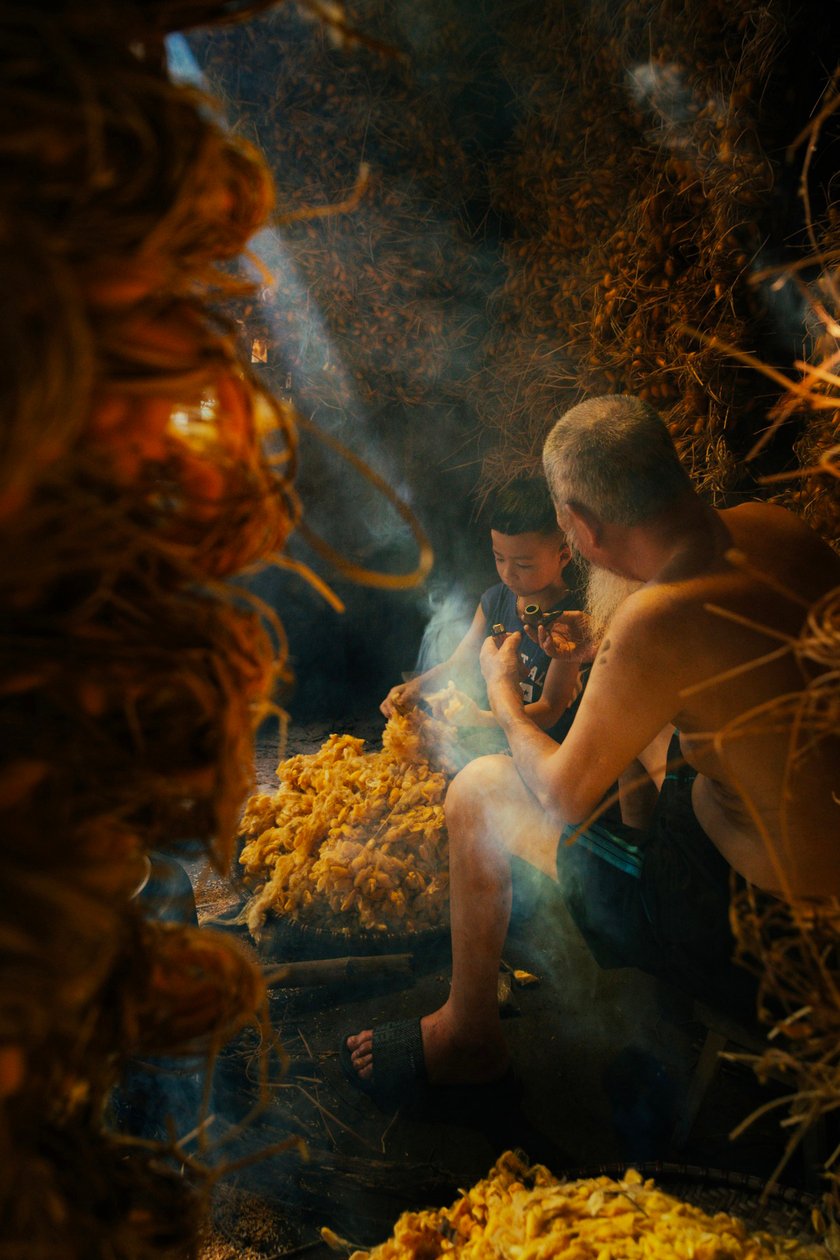
To reach that moment, they have gone through a diligent journey. From planting mulberry trees, incubating eggs, caring for silkworms through each molt, feeding them with handfuls of clean leaves, then transferring silkworms to cocoon spinning beds - all like a cycle of life recreated in each season. Silkworms are a fragile species, and must be cared for as carefully as a newborn baby. When the silkworms are ripe and are forming cocoons, they must watch for just the right amount of sunlight; too much sunlight will dry them out, too little sunlight will make the cocoons damp, and the silk threads will break. Every step requires meticulousness and precision.
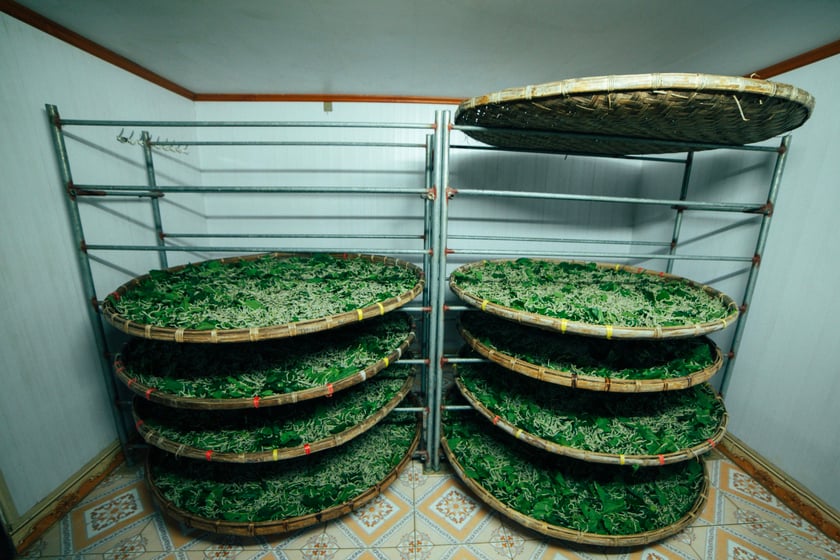
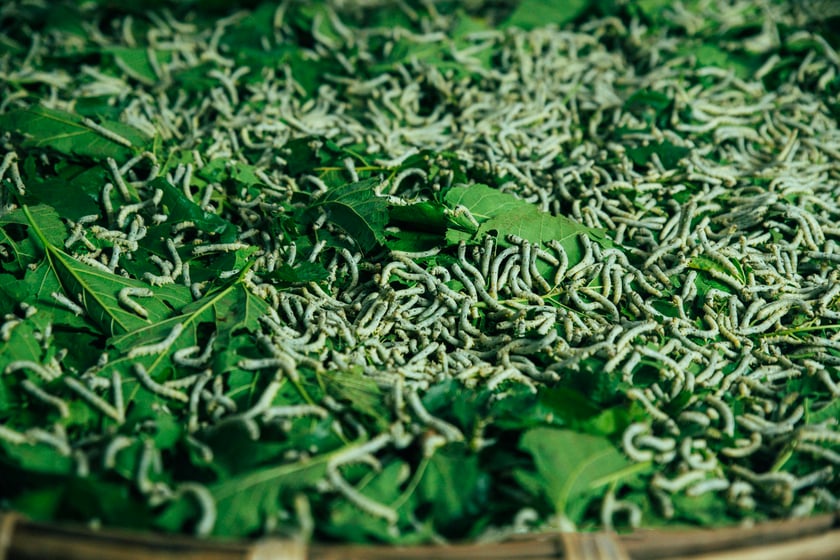
Raising silkworms is called "eating standing up" as a profession. The breeder must take care of the silkworms like taking care of a newborn baby. Almost all of their time is spent picking mulberry leaves, feeding the silkworms, and changing the leaves.
When the cocoons are ripe, each one is carefully removed by hand, cleaned, sorted, and then boiled or steamed to preserve the color and the fibers. Each silk thread is pulled out, spun, and dried - a memory that continues on the path to preserving the craft.
Until now, that memory has lost the steps of spinning silk and weaving, but the silkworm cocoons still remain, golden like a capsule of time even though times have changed.
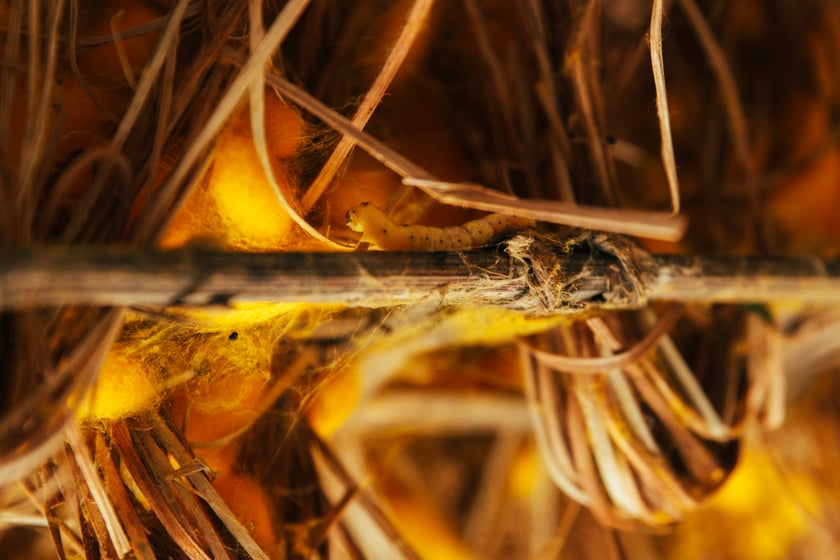

Ripe silkworm cocoons have a golden yellow color, shining in the sunlight, the crystallization of the time and effort of the breeder.
Sitting quietly in the middle of the room is an old worker, his hands trembling but still diligently removing each cocoon from the nest, neatly arranging them as if arranging a part of his old life. "People call this job a job of eating standing up. I work from early morning until late at night, my hands are always wet and smoky. But I'm used to it, I miss it when I quit, and it's hard to work," an old worker said, looking at the silk pole on the porch, the sunlight shining brightly.
What's left but the cocoons?
For people like photographer Nguyen Trong Cung, the trip to Vu Thu is not only to take a set of photos but also to better understand the silent loss of traditional craft villages.
The silk weaving village in Vu Thu is still there, with low tiled roofs, lonely cocoons and a few old hands who have not given up their craft. But without the care, support or at least recognition from the community, one day, the last cocoons will finally die out. And then, the frames of photographers like Nguyen Trong Cung may be all that remains.

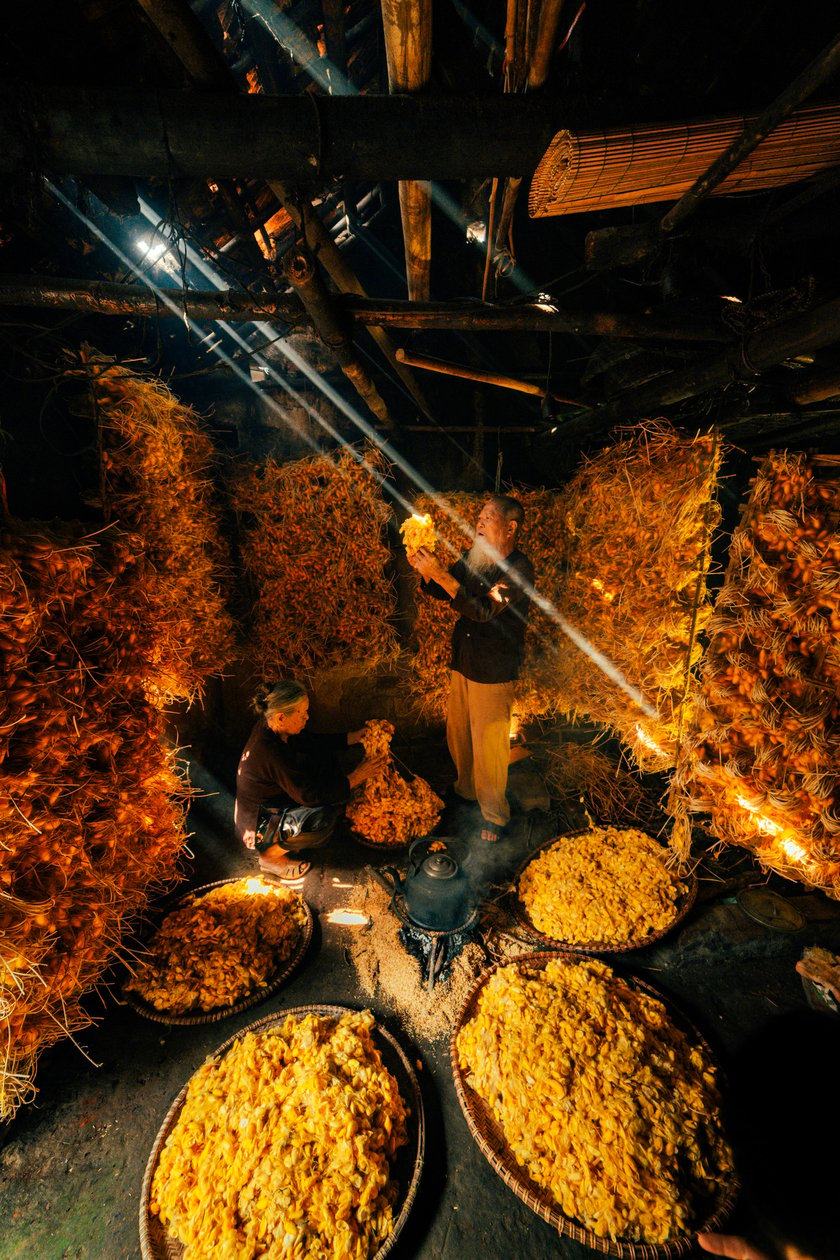
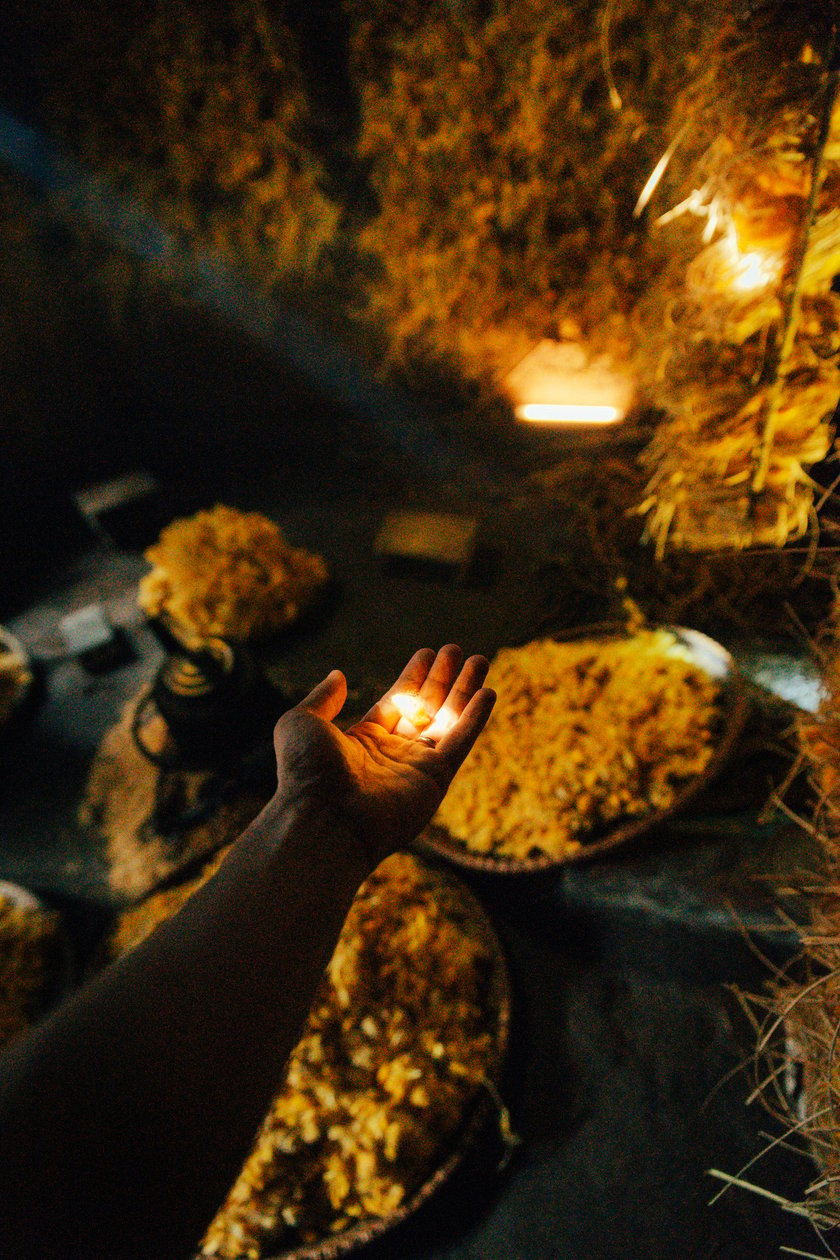
Photographer Nguyen Trong Cung’s photos do not seek to be pretty or stage the light, but instead focus on the eyes of the workers, on the cracked, wrinkled hands diligently removing the cocoons. There is something called nostalgia, but also respect for a profession that is about to disappear.
"Not everyone understands how fresh cocoons are grown from silkworms eating mulberry. Only when you remove the trays and see the cocoons burst white, can you see the value of the labor," said the old worker, his voice calm as if he had spoken from the previous mulberry season.





